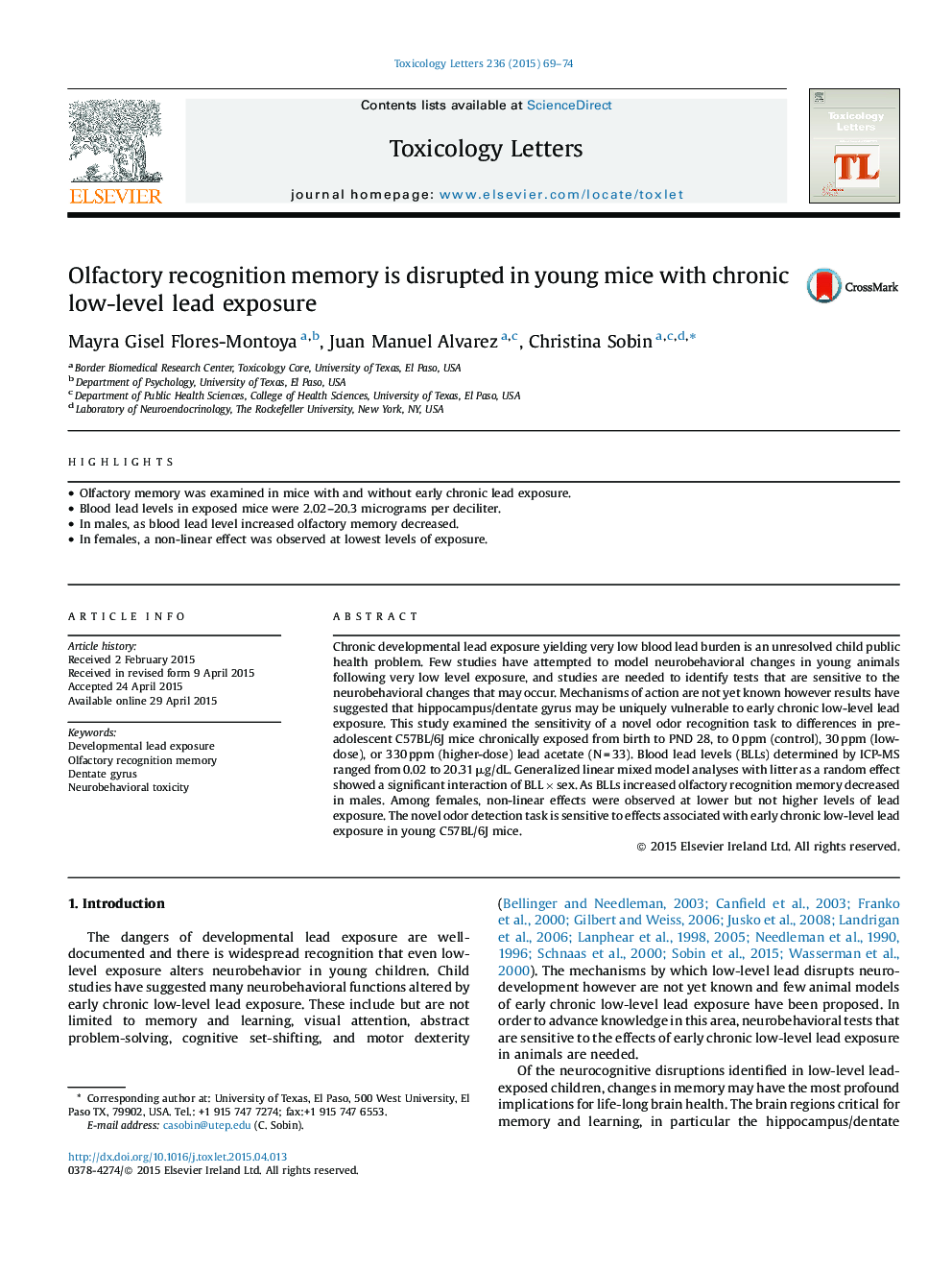| کد مقاله | کد نشریه | سال انتشار | مقاله انگلیسی | نسخه تمام متن |
|---|---|---|---|---|
| 2598704 | 1133148 | 2015 | 6 صفحه PDF | دانلود رایگان |
• Olfactory memory was examined in mice with and without early chronic lead exposure.
• Blood lead levels in exposed mice were 2.02–20.3 micrograms per deciliter.
• In males, as blood lead level increased olfactory memory decreased.
• In females, a non-linear effect was observed at lowest levels of exposure.
Chronic developmental lead exposure yielding very low blood lead burden is an unresolved child public health problem. Few studies have attempted to model neurobehavioral changes in young animals following very low level exposure, and studies are needed to identify tests that are sensitive to the neurobehavioral changes that may occur. Mechanisms of action are not yet known however results have suggested that hippocampus/dentate gyrus may be uniquely vulnerable to early chronic low-level lead exposure. This study examined the sensitivity of a novel odor recognition task to differences in pre-adolescent C57BL/6J mice chronically exposed from birth to PND 28, to 0 ppm (control), 30 ppm (low-dose), or 330 ppm (higher-dose) lead acetate (N = 33). Blood lead levels (BLLs) determined by ICP-MS ranged from 0.02 to 20.31 μg/dL. Generalized linear mixed model analyses with litter as a random effect showed a significant interaction of BLL × sex. As BLLs increased olfactory recognition memory decreased in males. Among females, non-linear effects were observed at lower but not higher levels of lead exposure. The novel odor detection task is sensitive to effects associated with early chronic low-level lead exposure in young C57BL/6J mice.
Journal: Toxicology Letters - Volume 236, Issue 1, 2 July 2015, Pages 69–74
